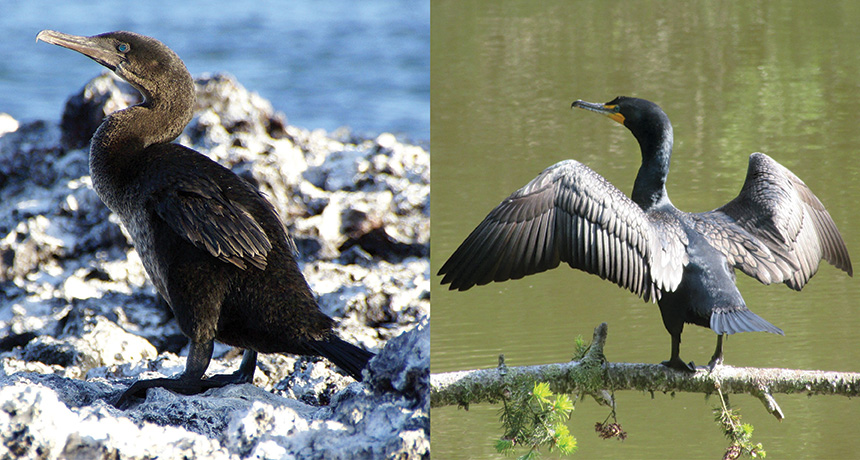To study Galápagos cormorants, a geneticist gets creative
Scientist calls on community to get DNA samples from bird species

GROUNDED Unlike short-winged Galápagos cormorants (left), double-crested cormorants (right) and all other species have a wingspan meant for flying.
Liam O’Brien/inaturalist (CC BY-NC 4.0); putneymark/wikimedia commons (CC BY-SA 2.0)